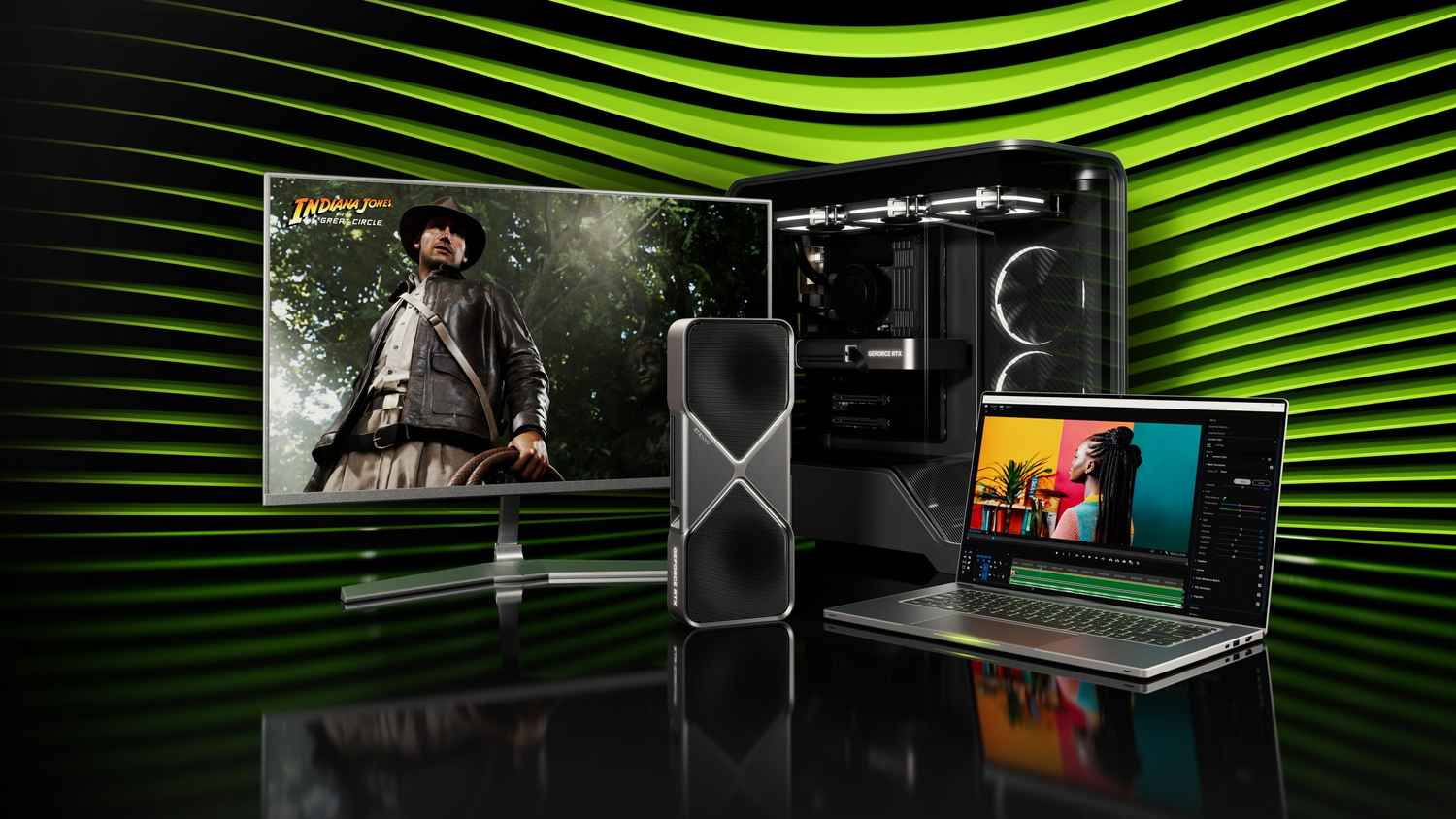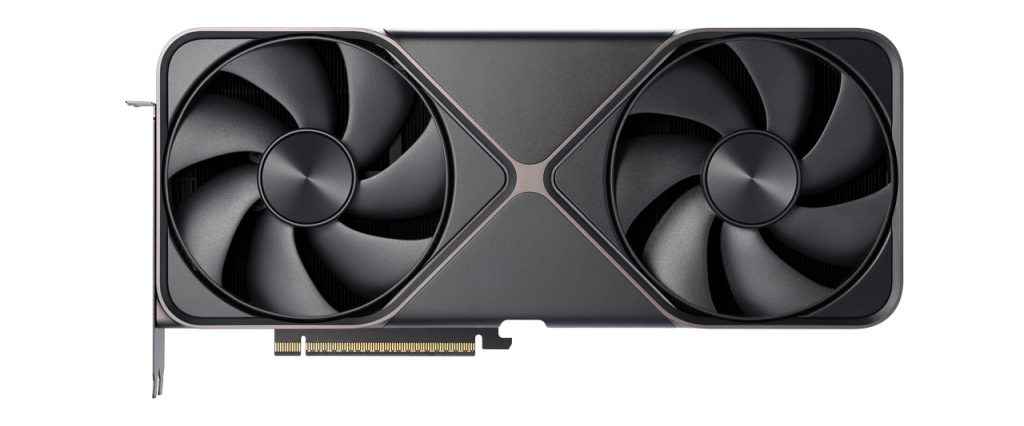CES 2025: NVIDIA Blackwell GeForce RTX 50 Series graphics cards announced starting at $549

NVIDIA has once again pushed the boundaries of computer graphics with the unveiling of its GeForce RTX 50 Series graphics cards. Announced at CES 2025, this new lineup—powered by the NVIDIA Blackwell architecture—heralds a transformative leap in AI-driven rendering, performance, and visual realism. With groundbreaking advancements like DLSS 4, neural shaders, and AI-driven game characters, the GeForce RTX 50 Series stands as a testament to NVIDIA’s relentless pursuit of innovation.
 Survey
SurveyBlackwell Architecture: The AI Engine
The heart of the GeForce RTX 50 Series lies in NVIDIA’s Blackwell architecture. Featuring fifth-generation Tensor Cores and fourth-generation RT Cores, this architecture elevates AI and ray tracing capabilities to unprecedented levels. The flagship GPU, the GeForce RTX 5090, boasts an astonishing 92 billion transistors and delivers over 3,352 trillion AI operations per second (TOPS). This equates to a 2x performance increase over its predecessor, the GeForce RTX 4090.
“Blackwell, the engine of AI, has arrived for PC gamers, developers and creatives,” said Jensen Huang, founder and CEO of NVIDIA. “Fusing AI-driven neural rendering and ray tracing, Blackwell is the most significant computer graphics innovation since we introduced programmable shading 25 years ago.”

DLSS 4
A standout feature of the RTX 50 Series is DLSS 4 (Deep Learning Super Sampling). This fourth-generation technology introduces Multi Frame Generation, an AI-powered technique that generates up to three frames per rendered frame. The result is a performance boost of up to 8x over traditional rendering methods. DLSS 4 also incorporates transformer model architecture, a first for the graphics industry, enabling greater detail, reduced ghosting, and enhanced anti-aliasing.
With support for over 75 games and applications at launch, DLSS 4 is set to redefine gaming and content creation. The addition of NVIDIA Reflex 2, with its Frame Warp technology, further enhances the gaming experience by reducing latency by up to 75%.
RTX Neural Shaders
Twenty-five years after introducing programmable shaders, NVIDIA has taken the next step with RTX Neural Shaders. This technology integrates small AI networks into programmable shaders, enabling film-quality materials and lighting in real-time games. For gamers and developers, this means unparalleled visual fidelity without compromising performance.
A key innovation is RTX Neural Faces, which uses generative AI to create high-quality, temporally stable digital faces in real-time. Complementary technologies like ray-traced hair and skin rendering, coupled with RTX Mega Geometry, push realism even further by supporting up to 100x more ray-traced triangles in a scene.
Autonomous Game Characters
The GeForce RTX 50 Series introduces a suite of NVIDIA ACE (Avatar Cloud Engine) technologies that bring AI-driven autonomy to game characters. These innovations enable characters to perceive, plan, and act like human players, creating dynamic and interactive gaming experiences. In games like PUBG: BATTLEGROUNDS and InZOI, ACE-powered characters adapt to in-game events and player behaviours, elevating immersion and strategy.
Large language models (LLMs) further enhance gameplay. For instance, raid bosses in MIR5 dynamically adjust tactics based on player actions, offering a level of challenge and unpredictability never seen before.
AI Tools for Creators
Beyond gaming, the RTX 50 Series is a boon for creators. These GPUs are the first consumer-grade hardware to support FP4 precision, doubling the performance of AI image generation models like FLUX. This enables creators to run generative AI models locally with smaller memory footprints, streamlining workflows.
NVIDIA Broadcast also benefits from these advancements. New beta features such as Studio Voice and Virtual Key Light offer livestreamers enhanced audio quality and professional lighting effects. Streamlabs’ Intelligent Streaming Assistant, powered by NVIDIA ACE and Inworld AI, acts as a virtual cohost and producer, simplifying livestream management.
Blackwell for Laptops
The Blackwell architecture’s impact extends to laptops, delivering desktop-class performance in portable devices. Featuring NVIDIA Max-Q technology, these laptops offer a 40% improvement in battery efficiency while maintaining sleek, lightweight designs. Whether for gaming, development, or creative tasks, the RTX 50 Series laptops set a new standard for mobile computing.
AI Foundation Models and Project R2X
For developers and enthusiasts, NVIDIA introduces NIM microservices and AI Blueprints, enabling the creation of AI agents and assistants tailored to specific tasks. Project R2X exemplifies this potential, showcasing a vision-enabled PC avatar capable of assisting with everything from desktop applications to video conferencing. These innovations underscore NVIDIA’s commitment to empowering users to harness AI’s full potential.
Availability and Pricing
The GeForce RTX 50 Series lineup includes:
- GeForce RTX 5090: $1,999 / INR 2,14,000 available Jan. 30
- GeForce RTX 5080: $999 / INR 1,07,000 available Jan. 30
- GeForce RTX 5070 Ti: $749 / INR 80,000 available February
- GeForce RTX 5070: $549 / INR 59,000 available February
These GPUs will be available as NVIDIA Founders Editions and from leading add-in card providers like ASUS, MSI, and ZOTAC. Prebuilt desktops from brands such as MAINGEAR and Scan Computers will also feature these cards.

Laptops equipped with RTX 50 Series GPUs will launch in March and April, with offerings from top manufacturers including ASUS, Lenovo, and Razer.
Mithun Mohandas
Mithun Mohandas is an Indian technology journalist with 14 years of experience covering consumer technology. He is currently employed at Digit in the capacity of a Managing Editor. Mithun has a background in Computer Engineering and was an active member of the IEEE during his college days. He has a penchant for digging deep into unravelling what makes a device tick. If there's a transistor in it, Mithun's probably going to rip it apart till he finds it. At Digit, he covers processors, graphics cards, storage media, displays and networking devices aside from anything developer related. As an avid PC gamer, he prefers RTS and FPS titles, and can be quite competitive in a race to the finish line. He only gets consoles for the exclusives. He can be seen playing Valorant, World of Tanks, HITMAN and the occasional Age of Empires or being the voice behind hundreds of Digit videos. View Full Profile